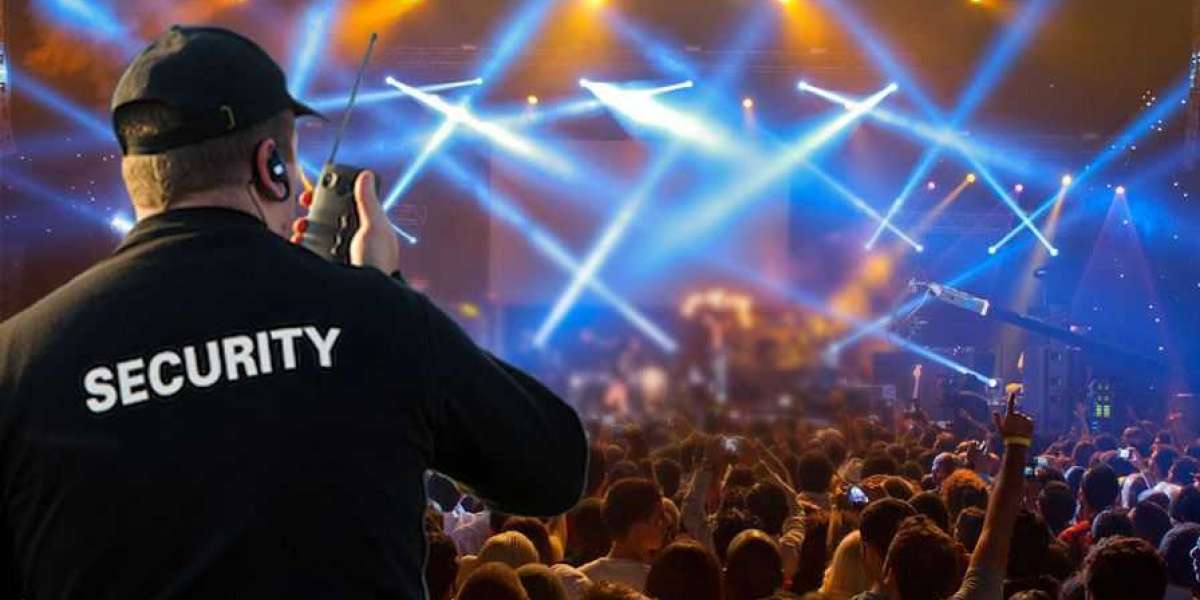Ensuring security at large parties and events is crucial to protect attendees, staff, and the overall success of the event. With a significant number of people gathering in one space, there are various risks such as crowd control issues, theft, or even more severe security threats. To create a safe environment, event organizers must plan effectively and put the right measures in place. Here are essential tips to ensure security at large parties and events.
Conduct a Comprehensive Risk Assessment:
Before planning any security measures, it is vital to conduct a thorough risk assessment. Identify potential hazards specific to the event such as overcrowding, alcohol consumption, or high-profile guests. Understanding these risks allows organizers to create tailored security plans, ensuring they address all concerns and are prepared for any potential emergencies.
For example, a music festival will have different security needs than a corporate event. Knowing the nature of the event and the audience profile will help assess potential risks accurately.
Hire Professional Security Personnel:
One of the most effective ways to ensure safety is by hiring professional security guards. Professional guards are trained to handle crowd control, monitor entry points, and respond to emergencies swiftly. They are also skilled in identifying suspicious behavior and can de-escalate situations before they become problematic.
For large events, it is essential to have enough security personnel to cover all areas of the venue, including entrances, exits, and backstage areas. Security guards provide a visible deterrent to potential wrongdoers and help maintain a secure atmosphere throughout the event.
Implement Strict Access Control:
Access control is vital in keeping unauthorized individuals out of the event. This can be done by using physical barriers such as fences and gates, alongside technological solutions like wristbands, tickets with QR codes, or RFID systems. Designate clear entry and exit points and ensure that all attendees are screened before entering the venue.
Security personnel should be stationed at these entry points to check tickets, IDs, and ensure that no prohibited items are brought into the event. Having a guest list for private parties or VIP sections will also help maintain control over who enters certain areas.
Use Surveillance Technology:
Surveillance systems such as CCTV cameras are a valuable tool for monitoring large crowds at parties and events. These cameras should be placed at key locations such as entrances, exits, and areas with high foot traffic. Surveillance footage can help detect suspicious behavior, monitor security personnel, and provide evidence if an incident occurs.
In addition to CCTV, consider using drones to monitor large outdoor spaces. This gives security teams a bird’s-eye view of the event, helping them respond quickly to any potential issues.
Ensure Effective Crowd Management:
Crowd management is one of the biggest challenges at large parties and events. Without proper planning, large groups of people can become chaotic, leading to accidents or security breaches. To manage crowds effectively, ensure there are clearly marked paths for entry, exit, and movement throughout the venue. Use barriers to create designated zones and prevent overcrowding in specific areas.
Additionally, having a sufficient number of ushers and stewards on hand to guide attendees and maintain orderly movement is critical. Event staff should be trained to communicate effectively with large groups and to manage unexpected situations, such as crowd surges or emergency evacuations.
Prepare for Medical Emergencies:
Security isn't just about preventing theft or crime—it also includes being prepared for medical emergencies. Large events increase the likelihood of attendees experiencing health issues such as dehydration, heat exhaustion, or injuries. It is crucial to have a trained medical team on-site to handle these situations promptly.
Create a dedicated medical area where attendees can receive care if needed, and ensure all staff and security personnel know the location of this area. Security teams should also have basic first aid knowledge, including how to handle emergencies like heart attacks, allergic reactions, or falls.
Develop a Clear Emergency Plan:
No matter how well an event is planned, emergencies can happen. Whether it's a fire, severe weather, or a security threat, having a clear and detailed emergency response plan is essential. This plan should cover evacuation routes, communication protocols, and designated roles for staff and security personnel in the event of a crisis.
All event staff should be trained on the emergency plan and perform regular drills to ensure they are prepared. Furthermore, attendees should be informed of safety procedures, such as where to go in the event of an evacuation. Clear signage around the venue can help guide people to exits in case of an emergency.
Coordinate with Local Authorities:
For large events, it is important to coordinate with local authorities such as the police, fire department, and medical services. Informing these agencies of the event's details ensures that they are aware of the potential risks and are prepared to respond if needed.
In some cases, it may be necessary to have law enforcement officers present at the event, especially if high-profile guests are attending or if there is a history of security concerns at similar events. Local authorities can provide additional support and resources to ensure the event runs smoothly and safely.
Monitor Social Media and Digital Platforms:
In today’s digital age, social media plays a significant role in large events. Attendees often use platforms like Twitter, Instagram, and Facebook to share their experiences in real-time. Security teams should monitor social media channels to identify any potential threats or negative activities, such as unauthorized gatherings or planned disruptions.
Many security companies now use social media monitoring tools to track mentions of the event and identify any suspicious activity. This proactive approach allows event organizers to address potential issues before they escalate.
Maintain a Strong Communication System:
Effective communication is key to a successful security plan. All security personnel, event staff, and emergency responders should be able to communicate clearly and quickly during the event. Two-way radios, mobile phones, and communication apps can help ensure that everyone is on the same page in case of an emergency.
It is also important to have a centralized command center where all security operations are coordinated. This allows for real-time decision-making and helps ensure that any security threats or emergencies are handled efficiently.
Final Thought:
Security at large parties and events requires careful planning, coordination, and the right mix of professional expertise. By conducting a comprehensive risk assessment, hiring trained security personnel, and using technology like surveillance cameras, organizers can ensure the safety of all attendees. Effective crowd management, access control, and emergency preparedness are crucial elements of a solid security plan. With the right measures in place, large events can be both enjoyable and secure for everyone involved.







